How to Grow Lychee Fruit from Seed: A Detailed Cultivation Guide
- March 1, 2024
- 2 comment
The lychee, with its sweet, fragrant fruit, is a gem of tropical agriculture. Native to the Guangdong and Fujian provinces of China, this fruit has captivated taste buds around the globe. Growing lychee from seed can be a rewarding endeavor for gardening enthusiasts. This guide provides a comprehensive approach to cultivate lychee trees in your own garden.
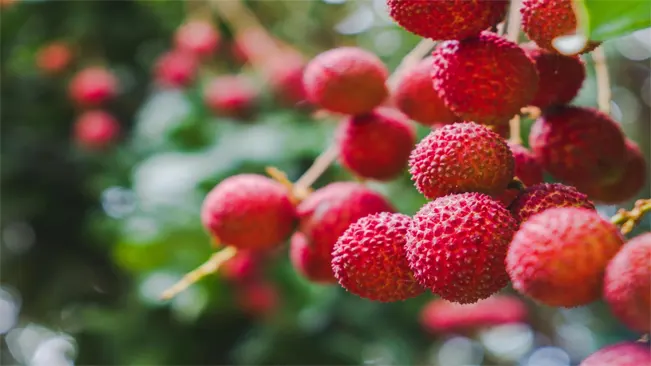
Nutritional Benefits of Lychee
| Benefit | Description |
|---|---|
| Nutrient Rich | Lychees are a good source of vitamin C, vitamin B6, niacin, riboflavin, folate, copper, potassium, phosphorus, magnesium, and manganese. |
| Antioxidant Properties | High in antioxidants like flavonoids, which help fight oxidative stress and may reduce the risk of chronic diseases. |
| Heart Health | May aid in reducing the risk of heart disease due to its antioxidant properties and potassium content, which helps regulate blood pressure. |
| Immune Support | High vitamin C content boosts the immune system, aiding in the prevention of infections and illnesses. |
| Anti-Inflammatory | Contains anti-inflammatory compounds, which can help reduce inflammation in the body. |
| Digestive Health | Rich in dietary fiber, which aids in digestion and promotes regular bowel movements. |
| Skin Health | The water content and antioxidants in lychees can contribute to healthy, hydrated skin. |
| Cancer Prevention | Some studies suggest that the compounds in lychees may have anti-cancer properties, though more research is needed. |
| Weight Management | Low in calories and high in water and fiber, which can help in managing weight. |
| Bone Health | Contains nutrients like magnesium, phosphorus, iron, manganese, and copper, which are beneficial for bone health and strength. |
List on How To Grow Lychee Fruit from Seed
- Seed Selection and Preparation
- Germination
- Seedling Care
- Transplanting
- Ongoing Care
- Patience and Harvest
Seed Selection and Preparation
Obtaining Seeds
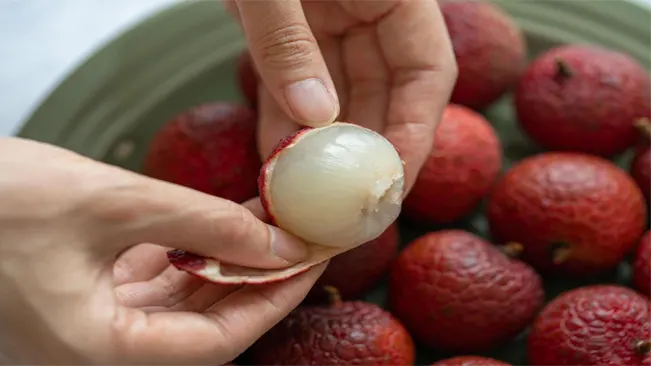
- Source: It’s crucial to source your seeds from fresh, ripe lychees. The best time to collect seeds is during the lychee fruit season, which typically occurs in the late spring and early summer.
- Quality Check: Look for fruits that are plump, brightly colored, and free from blemishes or signs of decay. The fruit’s quality is a direct indicator of the seed’s viability.
- Freshness: Seeds should be used soon after extraction, as their germination rate decreases significantly with time.
Extracting the Seed

- Technique: Carefully cut open the lychee fruit, making sure not to cut too deeply to avoid damaging the seed inside.
- Handling: Once the fruit is open, gently pry out the seed. Lychee seeds are typically brown, glossy, and somewhat round or oval.
- Precaution: The seed’s outer layer can be delicate. Rough handling might affect its ability to germinate.
Seed Preparation
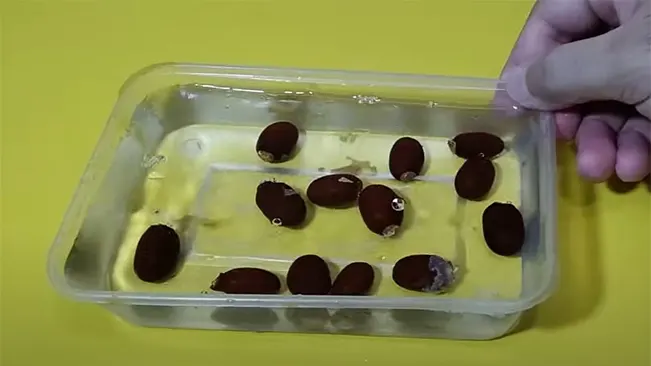
- Cleaning: Rinse the seed under cool running water to remove any clinging fruit flesh. This step is important to prevent mold or fungal growth during germination.
- Soaking: Place the cleaned seed in a container of water and let it soak for approximately 24 hours. This soaking process softens the seed coat and kickstarts the germination process.
- Water Quality: Use clean, room-temperature water for soaking. Avoid using overly cold or hot water, as extreme temperatures can harm the seed.
Germination
Pre-Germination Environment
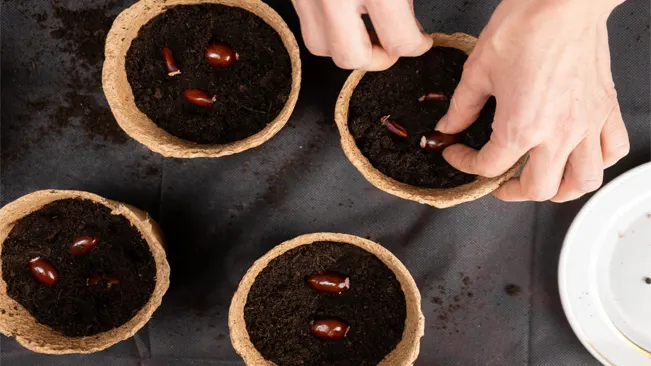
- Container Choice: A small container is ideal for starting lychee seeds. Ensure it has drainage holes to prevent waterlogging.
- Soil Mix: A well-draining soil mix is crucial. You can use a mix specifically designed for seedlings or create your own mix using equal parts peat, perlite, and vermiculite. This combination ensures good aeration and drainage.
- Planting Depth: Planting the seed about an inch deep allows it to have enough coverage to maintain moisture while not being too deep to hinder its sprouting.
Moisture and Warmth
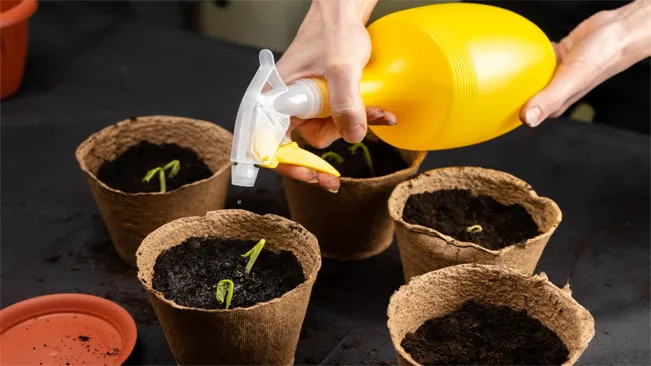
- Moisture Control: The soil should be kept consistently moist but not waterlogged. Overwatering can lead to fungal growth and rot. Using a spray bottle to mist the soil can help maintain the right moisture level without overdoing it.
- Warmth Requirements: Lychee seeds germinate best in warm conditions. The ideal temperature is between 75°F and 90°F (24°C – 32°C). You can use a heat mat under the container to maintain a consistent temperature, especially in cooler climates.
- Humidity: In addition to warmth, lychee seeds require a humid environment. Covering the container with a clear plastic dome or plastic wrap can help retain moisture and create a mini greenhouse effect.
Germination Time
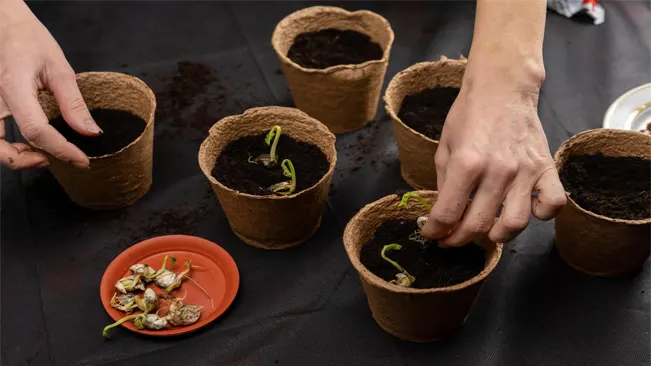
- Patience is Essential: Lychee seeds can be somewhat unpredictable in their germination time. While some may sprout within a week, others might take up to a month. This variability is normal, so patience is key.
- Monitoring: Keep an eye on the soil moisture and temperature during this period. Avoid direct sunlight on the seeds, as it can raise the soil temperature excessively and dry out the soil.
- Signs of Germination: You’ll know germination is occurring when you see the seed crack and a small sprout emerges. Once the sprout appears, it’s important to gradually expose it to more light to encourage strong and healthy growth.
Post-Germination Care
- Light Exposure: After the seed has germinated, gradually increase its exposure to indirect sunlight. This helps the seedling to develop a robust stem and leaves.
- Transplanting: When the seedling has grown a few sets of leaves and is strong enough, it can be transplanted to a larger pot or a permanent location outdoors (if the climate is suitable).
Seedling Care
Light
- Importance: Light is crucial for the growth and health of lychee seedlings. It plays a key role in photosynthesis, the process by which plants make food.
- Indirect Sunlight: Direct sunlight can be too intense for young lychee plants and may cause leaf burn. Instead, aim for a spot that receives bright but indirect sunlight. This can be achieved by placing the plant near a window that gets plenty of light but is shielded from the direct rays of the sun.
- Adjusting Light Exposure: As the plant matures, you can gradually expose it to more direct sunlight. This helps the plant acclimate and prepares it for eventual outdoor planting if that is the goal.
Watering
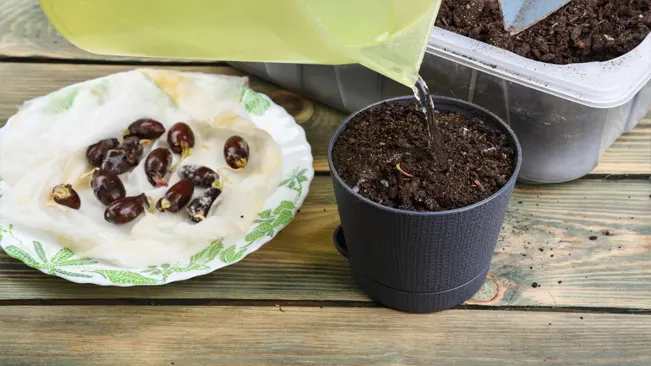
- Moisture Level: The top inch of soil should be allowed to dry out before watering again. This approach ensures that the plant gets enough water without the soil becoming waterlogged, which can lead to root rot.
- Method of Watering: Water the plant deeply but infrequently. This means when you water, do so thoroughly, allowing water to reach the deeper roots, encouraging them to grow downwards.
- Monitoring Needs: The watering frequency may vary depending on environmental conditions like temperature and humidity. In hotter, drier conditions, more frequent watering may be necessary.
Fertilizing
- Nutrient Balance: A balanced, slow-release fertilizer is ideal for young lychee plants. This type of fertilizer will provide a steady supply of essential nutrients over time.
- NPK Ratio: Look for a fertilizer with a balanced NPK ratio (Nitrogen, Phosphorus, Potassium), such as 10-10-10 or 20-20-20.
- Application Frequency: Follow the instructions on the fertilizer packaging for application rates and frequency. Over-fertilizing can harm the plant.
- Observation: Watch for signs of nutrient deficiencies in the plant, which can show up as discoloration or deformities in the leaves. Adjust your fertilizing strategy accordingly.
Transplanting
When to Transplant Lychee Seedlings
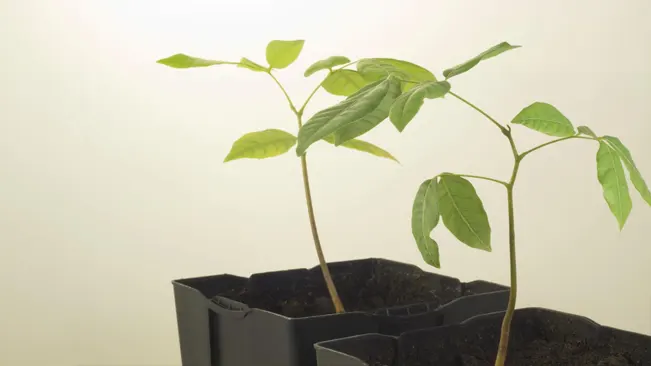
- Size Indicator: The 6-inch height is a good indicator that the lychee seedling has developed a strong enough root system to handle the transplant.
- Age Consideration: This stage is usually reached several months after germination, depending on the growth conditions.
- Root Development: Check for a well-developed root system. A good sign is when roots start to form a network or slightly outgrow the current pot.
Choosing the Right Spot for Transplantation
- Sunlight Requirements: Lychee trees require full sun for optimal growth. This means the location should receive at least six hours of direct sunlight daily.
- Soil Type: The ideal soil should be rich, slightly acidic to neutral (pH 5.0-7.0), and well-draining. Avoid areas where water tends to accumulate.
- Wind Protection: Choose a spot sheltered from strong winds, which can damage the tree and its fruit. Natural barriers or windbreaks like walls or taller trees can be beneficial.
- Space Consideration: Ensure there is enough space for the tree to grow. Lychee trees can reach substantial heights and widths.
Transplanting Process
- Preparation:
- Water the Seedling: Water the seedling thoroughly a few hours before transplanting to ensure the soil is moist and the roots are hydrated.
- Prepare the New Location: Dig a hole that is twice as wide and the same depth as the current pot. Amend the soil with organic matter if necessary.
- Transplanting:
- Gently Remove the Seedling: Tip the pot sideways and gently ease the seedling out. Avoid pulling the plant by its stem.
- Root Handling: If the roots are circling the pot, gently tease them apart to encourage outward growth.
- Positioning in the New Spot: Place the seedling in the center of the hole. The top of the root ball should be level with the surrounding soil surface.
- Aftercare:
- Filling the Hole: Backfill the hole with soil, gently tamping down to remove air pockets.
- Watering: Water the plant immediately to settle the soil around the roots and to eliminate air pockets.
- Mulching: Apply a layer of organic mulch around the base of the tree to conserve moisture and regulate soil temperature.
- Support: If necessary, stake the tree to provide support and ensure it grows straight.
Ongoing Care
Watering
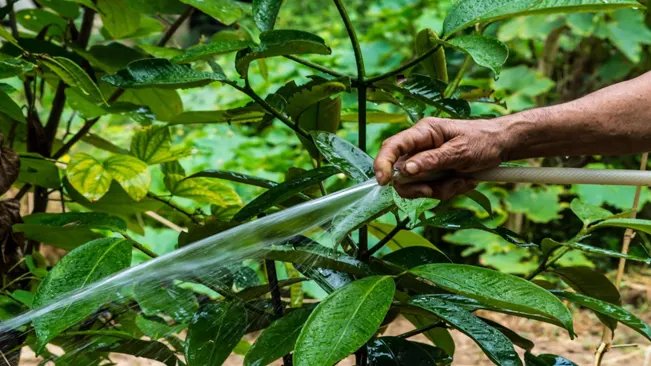
- Consistent Moisture: Lychee trees prefer soil that is consistently moist. They are sensitive to both drought and waterlogging. The key is to maintain a balance.
- Monitoring Soil Moisture: Check the soil regularly. It should be moist but not soggy. During hot, dry periods, more frequent watering may be necessary.
- Watering Technique: Use a soaker hose or drip irrigation for deep watering. This encourages deeper root growth and helps establish a stronger tree.
- Seasonal Adjustments: Reduce watering in the winter when the tree is dormant, especially for lychees grown in cooler climates.
Pruning
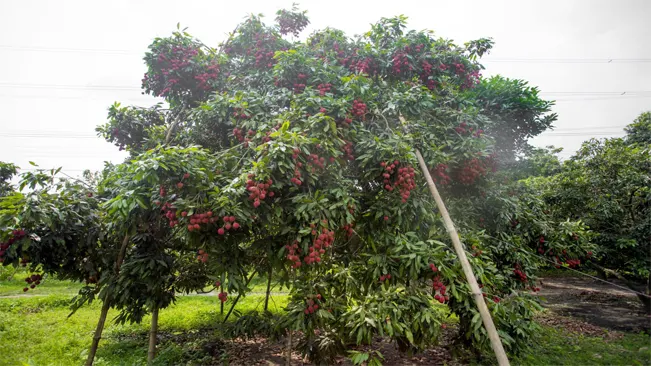
- Formative Pruning: In the early years, prune to shape the tree and establish a strong, balanced framework of branches.
- Maintenance Pruning: Remove any dead, diseased, or crossing branches to maintain tree health and air circulation.
- Height Control: If necessary, prune to control the height for ease of harvest. Lychee trees can grow quite tall if left unpruned.
- Best Time to Prune: The best time to prune is after harvesting the fruit or in the late winter before the new growth starts.
Pest and Disease Management
- Regular Inspection: Regularly inspect your lychee tree for signs of pests or diseases. Common pests include aphids, mites, and fruit flies.
- Natural Predators: Encourage beneficial insects like ladybugs and lacewings that prey on common pests.
- Disease Prevention: Ensure good air circulation around the tree and avoid overhead watering to prevent fungal diseases.
- Organic Pesticides: If pest problems persist, consider using organic pesticides. Neem oil is a popular choice for its effectiveness and low toxicity.
- Professional Advice: If you’re unsure about a pest or disease, seek advice from a local extension office or a professional horticulturist.
Patience and Harvest
Growing lychee trees from seed is a long-term commitment that requires patience. Here are key points to consider:
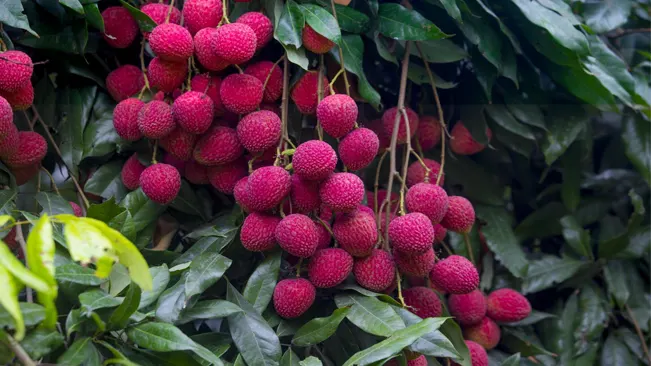
- Time to Maturity: Lychee trees grown from seed typically take about 5 to 10 years to mature enough to produce fruit. This duration can vary based on growing conditions, climate, and care.
- Growth Phases: The tree goes through several growth phases, including seedling, juvenile, and then finally the fruit-bearing stage. Each stage has its own requirements for light, water, and nutrients.
- Climatic Factors: The tree’s growth rate and time to maturity are influenced by the climate. Lychee trees thrive in tropical and subtropical climates and may take longer to mature in less ideal conditions.
- Varietal Differences: Different varieties of lychee may have varying maturation times. Some may bear fruit a bit earlier, while others might take longer.
Harvest Time
Knowing when to harvest lychees is crucial for enjoying them at their best. Here are some tips:

- Color Indication: Lychee fruits are ready for harvest when they turn a vibrant red or pink-red color. This color change is a clear indicator of ripeness.
- Texture: Ripe lychees are slightly soft to the touch. If they are too hard, they may not be ripe enough; if too soft, they might be overripe.
- Taste Testing: If you’re unsure, you can taste test a few fruits. Ripe lychees are sweet with a slight floral fragrance.
- Harvest Method: When harvesting, it’s advisable to cut the fruit clusters with a bit of stem attached to keep them fresh longer.
- Seasonal Harvest: Lychee trees usually bear fruit once a year, with the harvest season varying by region. In many places, it occurs in late spring or early summer.
Post-Harvest Care
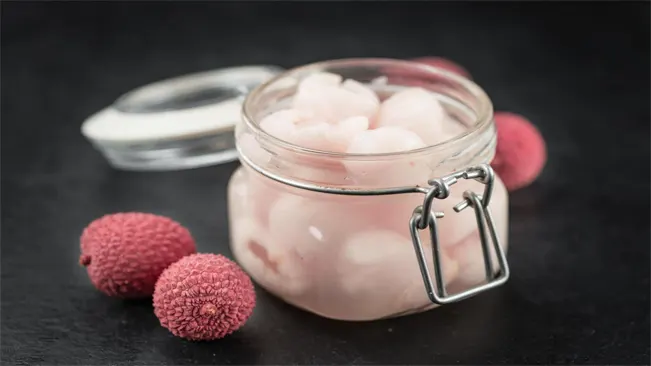
- Storage: Lychees don’t have a long shelf life once harvested. They are best consumed within a few days. Refrigeration can extend their life for up to a week.
- Processing: If you have a large harvest, consider processing the lychees. They can be dried, canned, or made into lychee wine or jam.
Conclusion
Growing lychee from seed requires patience and care, but the reward of fresh, home-grown lychees is incomparable. This exotic fruit not only adds a unique flavor to your garden but also offers a beautiful aesthetic with its glossy leaves and attractive fruits. Embrace the challenge and enjoy the journey of growing your own lychee tree.
FAQs (Frequently Asked Questions)
1. How do I select the best lychee seeds for planting?
Choose seeds from high-quality, ripe lychee fruits. The fresher the seeds, the better their germination rate. Avoid dried or shriveled seeds.
2. Is it necessary to soak lychee seeds before planting?
Yes, soaking the seeds in water for 24 hours before planting helps to soften the outer shell and speeds up germination.
3. What type of soil is best for planting lychee seeds?
Use a well-draining soil mix rich in organic matter. A mix of peat, perlite, and vermiculite is often recommended for optimal drainage and moisture retention.
4. How deep should I plant the lychee seeds?
Plant the seeds about one inch deep in the soil. This depth provides enough coverage for moisture retention while allowing the seedling to emerge easily.
5. What are the ideal conditions for germinating lychee seeds?
Lychee seeds need a warm, humid environment to germinate. The ideal temperature range is between 75°F and 90°F (24°C – 32°C). Keep the soil consistently moist but not waterlogged.
6. How long does it take for lychee seeds to germinate?
Germination typically occurs within one to four weeks, but it can sometimes take longer. Patience is key.
7. How much light do seedlings need?
Once the seed has sprouted, provide it with plenty of indirect sunlight. Avoid direct, harsh sunlight as it can damage the young plant.
8. When should I transplant the lychee seedling?
Transplant the seedling when it reaches about 6 inches in height or when it has several sets of leaves. Ensure you do so gently to minimize root disturbance.
9. Can I grow a lychee tree in a pot?
Yes, lychee trees can be grown in large pots with adequate drainage. However, remember that trees grown in pots may not grow as large or fruit as well as those planted in the ground.
10. How often should I water my lychee tree?
Water the lychee tree when the top inch of soil becomes dry. Lychee trees prefer consistent moisture, especially during the growing season, but be cautious of overwatering to avoid root rot.

Kristine Moore
Forestry AuthorI'm Kristine Moore, a seasoned garden landscaping professional with over 30 years of experience. My extensive career has been dedicated to transforming outdoor spaces into stunning, sustainable landscapes. With a deep understanding of horticulture, design principles, and environmental stewardship, I have become a respected figure in the field, known for creating harmonious, visually appealing, and eco-friendly gardens. My commitment to excellence and continuous learning in landscaping trends and techniques has solidified my reputation as an expert in garden design and implementation.






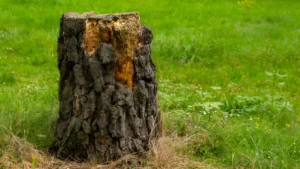






Hi how can I grow lychee P LL ant from cuttings thank you
Mercy mosarwe
March 22, 2024 7:30 amTo grow a lychee plant from cuttings, select a healthy branch from an existing tree and make a 45-degree angle cut just below a leaf node. The cutting should be about 6-8 inches long. Remove the leaves from the lower half and optionally dip the cut end into rooting hormone. Plant the cutting 2-3 inches deep in a well-draining potting mix and cover the pot with a plastic bag to maintain humidity. Place it in a warm, bright area but out of direct sunlight. Rooting can take several weeks to a few months, so be patient and check for root growth by gently tugging on the cutting. You can Browse of our Collection of Guides here: https://forestry.com/guides/
Kristine Moore
March 25, 2024 5:59 am